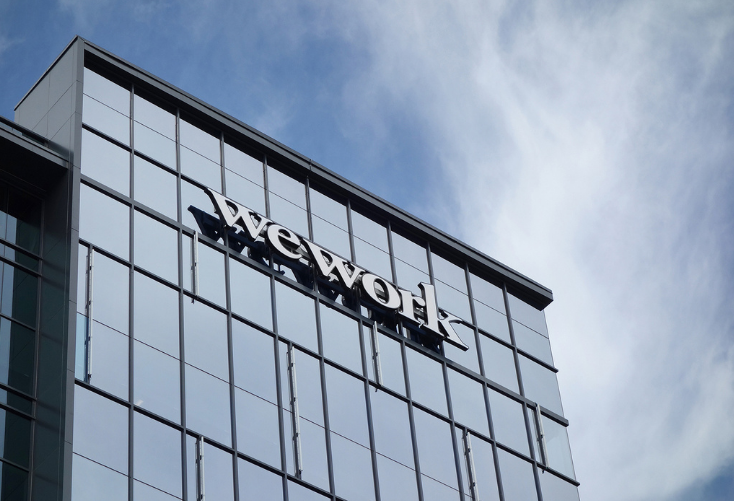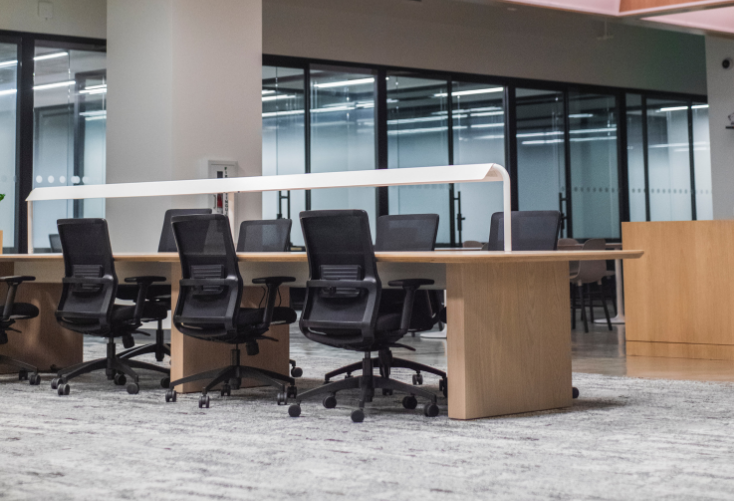Hand selected flexible workspace news from the most reliable sources to keep you ahead of the pack. We find all the latest news, so you don’t have to. Morning and afternoon updates. Stay in the know.
Here’s what you need to know today:
- IWG’s Reasoning Behind Entities Filing For Bankruptcy NEW
- How Remote Working Impacts Working Parents NEW
- Could Remote Working Be Taking A Hit? NEW
- Demand For Flexible Offices Will Continue Into 2021
- WeWork Offers On-demand Office Space
- What To Expect From The Future Of The Workplace
IWG’s Reasoning Behind Entities Filing For Bankruptcy
Over the course of a few months, IWG, parent company for Regus, has filed bankruptcy for 97 different entities connected to both Regus and its coworking brand Spaces.
These locations have voluntarily filed for Chapter 11 bankruptcy protection, with each entity being a direct or indirect subsidiary of Regus.
For instance, RGN-Irving II LLC that has principal assets in Irving, Texas lists one and 49 debtors with liabilities ranging from $500,001 to $1 million. The entity also lists James Feltman, managing director at Duff & Phelps, as the officer responsible.
The first-day relief declaration on August 17 listed 656 leases that debtors of Regus operate. The document also reveals debts of $432.9 million are owed by debtors to the company.
Feltman blamed the company’s ongoing challenges on the pandemic, stating that entities started filing for Chapter 11 when talks with landlords came to a halt.
The filings were meant to serve as a “breathing spell” to give them time to restructure leases as landlords attempt to collect missed rent and other costs. If that does not pan out, the company will slowly close down operations and liquidate assets.
“In the new world of working post COVID-19, offices will still be needed but there will be a greater requirement for more flexible space,” the Aug. 4 report said. “More companies will have distributed workforces with more satellite offices, more employees working closer to home or continuing to work from home.”

How Remote Working Impacts Working Parents
Working from home has been one of the most highly sought-after work arrangements for years now, but now that it has become a reality in the midst of an unprecedented pandemic, workers may be struggling with this new found freedom.
Prior to the pandemic, remote working meant the flexibility to choose when and where you worked, without the restrictions of a physical office. Now, it means balancing both work and personal responsibilities, which can hurt productivity and the wellbeing of workers.
The research team at the Center for Women in Business and the Center for Women and Work at Rutgers University conducted a survey that revealed that men contributed 48% of household labor, while women reported 66%. Additionally, women perceived their male partners to contribute 29%, while men viewed their female partners contributing 45%.
These results reveal not only the inequality of household responsibilities between couples consisting of men and women, but also the perception of who contributes to this labor.
According to the findings, 30% of working parents saw an increase in productivity after the pandemic, while also reporting higher job satisfaction compared to those without children. This is partially due to a more balanced distribution of household labor.
While balancing work and home responsibilities during these stressful, uncertain times may be challenging, one positive outcome of this may be the dissipation of stigmas in relation to working parents. This could mean companies have leaders that are more empathetic and a workplace environment that better values the needs of their employees.

Could Remote Working Be Taking A Hit?
In a private meeting, JP Morgan CEO Jamie Dimon indicated that the company’s productivity levels were falling due to their employees working from home. Now, the bank is encouraging employees to return to the office.
Additionally, Google CFO Ruth Porat recently stated that in-person collaboration is essential to fostering innovation, which suggests that companies are starting to see some downfalls of remote working.
According to interior design firm Vocon’s recent survey, remote working fatigue is starting to grow as productivity drops. The survey of 450,000 employees found that there has been a 40% decrease in productivity over the past few months. One respondent added that the culture at their workplace is their key to success and attracting top talent, but that it is suffering from remote working.
The September survey produced vastly different results than the one conducted in April, which revealed that 56% of business leaders viewed productivity levels as excellent.
Knowing this, we can expect companies to opt for a hybrid approach that allows employees to work from home and in the office for at least part of the time to meet the needs of all work styles.
“Each business leader is faced with a host of considerations, and they must select the solution that works for their unique circumstances,” said Megan Spinos, director of strategy at Vocon. “There is no one size fits all solution, and every organization must assess what is right for them and customize their own approach.”

Demand For Flexible Offices Will Continue Into 2021
According to the latest figures from the Office for National Statistics, the government effort to bring more employees back into the workplace has seen commuters grow to over 60%. However, the return to pre-pandemic office occupancy levels won’t occur until at least early 2021 as companies evaluate how to reconfigure their spaces, according to FreeOfficeFinder.
Research from FreeOfficeFinder indicates that companies are opting out of expensive leases and looking into flexible offices to offer some financial relief.
In fact, the findings from FreeOfficeFinder revealed that 89% of businesses are exploring serviced office solutions for January 2021. Additionally, companies looking to downsize their current office space and continue offering flexibility will likely turn to flexible offices to accommodate workers.
“Businesses have to have a great emphasis on ensuring the safety of their workforce and employing Covid-19 measures, while they also have to be able to provide more flexible arrangements for those employees that want to be able to work from home at times,” said Nick Riesel, CEO of FreeOfficeFinder.

WeWork Offers On-demand Office Space
Balder Tol, manager of WeWork Australia, claims that demand for flexible offices is growing as businesses pivot away from large corporate headquarters.
Tol added that large organizations are attempting to de-densify their headquarters due to the pandemic and instead use a network of offices for the time being until they sort out their real estate footprint plans in the long run.
“Despite the changes we’ve seen over the past year, space as a service, WeWork and coworking spaces, have been incredibly well suited to this accelerated change,” said Tol. “We know from talking with both our new and existing members that flexibility – especially this year – stands central into any of their decision-making but [also] informs a huge part of the value proposition they want to offer their employees.”
To meet this demand, WeWork has started offering an on-demand service that will allow people to use their workspaces for short amounts of times, without the risk of taking up a long-term lease. With this program, users can gain access to various WeWork locations in New York starting at $29 a day, or reserve meeting rooms for up to $10 an hour.

What To Expect From The Future Of The Workplace
Although some have claimed that the office is dead, we can anticipate that physical workspaces will still play a crucial role in business operations, but in a different way. Now that companies have realized both the perks and downfalls of remote working, leaders will likely opt for a hybrid arrangement to reap the benefits of both.
One of the biggest losses for the workplace in the last several months has been the lack of in-person meetings. While millions of workers are equipped with the video conferencing tools needed during this time, it is hard to replicate a face-to-face meeting.
“Online video conferences are no substitute for the creativity that happens when a group of smart people get together in person,” wrote Alex Conant and Terry Sullivan of public relations consulting firm Firehouse Strategies. “Trust between colleagues can easily break down outside the office.”
While in-person attendance may be the ideal solution for companies themselves, it is essential for business leaders to consider the needs of employees. Over the past few years, research has proven time and time again that valuing the employee experience is key to a healthy, efficient work environment. So if an employee gets more work done at home than in the office and are happier this way, businesses should offer them the choice to continue doing so.
However, there are still workers who have mixed feelings about remote working who may actually want to work outside of their homes, yet avoid the stress of daily commutes. For them, opting for a local coworking space closer to their home may be the ideal solution.



 Dr. Gleb Tsipursky – The Office Whisperer
Dr. Gleb Tsipursky – The Office Whisperer Nirit Cohen – WorkFutures
Nirit Cohen – WorkFutures Angela Howard – Culture Expert
Angela Howard – Culture Expert Drew Jones – Design & Innovation
Drew Jones – Design & Innovation Jonathan Price – CRE & Flex Expert
Jonathan Price – CRE & Flex Expert














